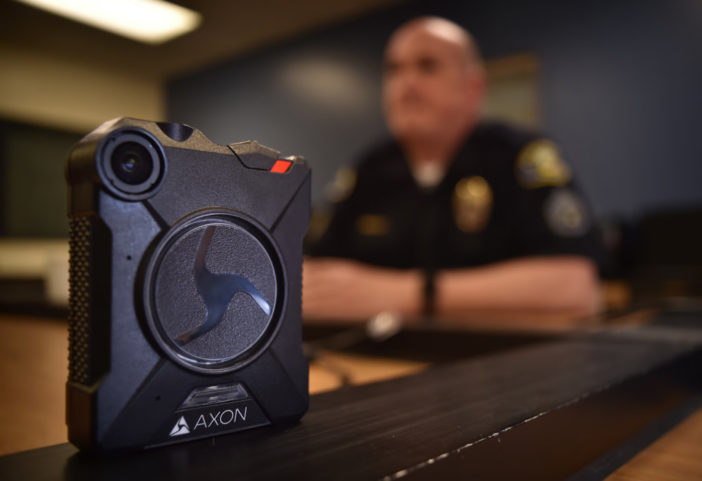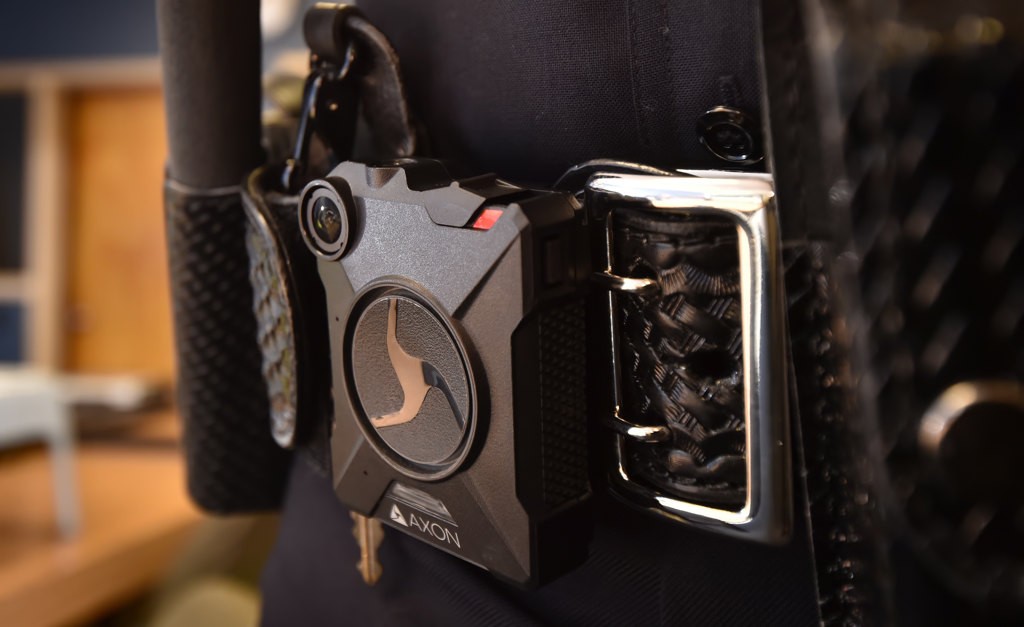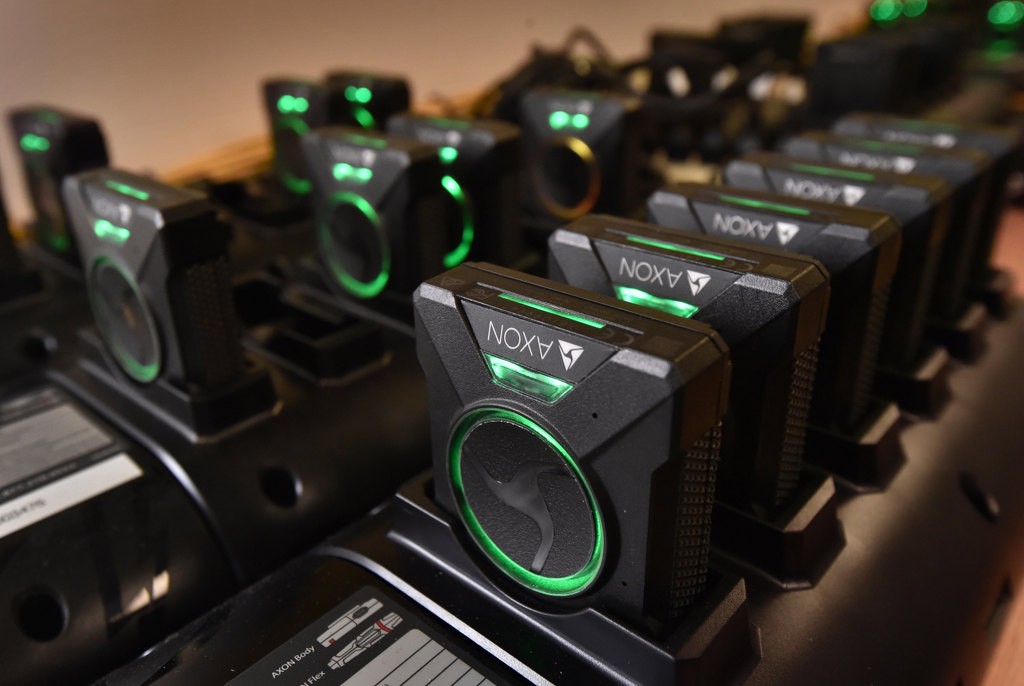Every now and then, Anaheim PD personnel like to pop into Sgt. Garet Bonham’s office and gawk at his 55-inch screen.
It’s not a TV screen, Bonham sometimes has to correct them, but a computer monitor he purchased himself.
Bonham, a big fan of technological gadgetry, had his propeller spinning recently when the APD rolled out the second version of its body-worn cameras.
Bonham is the sergeant in charge of the hardware rollout for the APD, which in early 2015 became one of the first law enforcement agencies in Orange County to equip its officers with body-worn cameras in its continual pursuit of providing the community with excellence in police service.
Capt. Ben Hittesdorf worked with Bonham on the swap out.
The Anaheim City Council approved funding for APD’s first body-worn cameras in September 2014.
Now APD officers are rolling out on patrol shifts wearing an Axon Body 2, made by Taser.
The second generation of Axon’s body-worn cameras, which must be worn facing forward and that capture scenes in 143 degrees, boasts several new features.
For example, officers now can push an audio mute button while the video rolls. On the old cameras, they had to stop the video and restart it if they wanted to discuss tactics or sensitive matters.
The new camera also has dual-channel audio, allowing for ambient noises to be filtered out, should they need be, down the road during the forensic stages of an investigation (officers cannot filter out anything).
The Axon Body 2, which can run for more than 12 hours, has the capability to record in high-definition 1080 horizontal lines of vertical resolution, although the APD sets its body-worn cameras at 720 horizontal lines of vertical resolution.
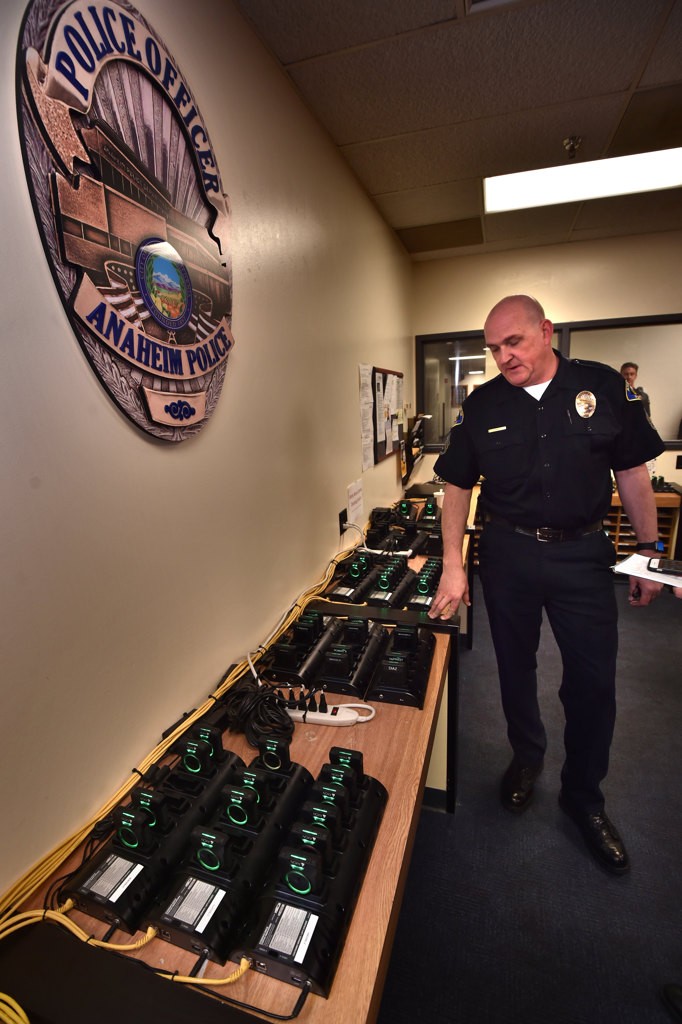
Sgt. Garet Bonham shows the docking bays where body cameras are charged while automatically uploading the encypted data to a secure digital evidence locker managed by evidence.com.
Photo by Steven Georges/Behind the Badge OC
It is drop-tested to 6 feet, said Bonham, who in 2013 helped put together a test group when the APD started shopping around for a vendor for body-worn cameras.
The APD now is one of four LE agencies in O.C. that has equipped its officers with body-worn cameras, along with the Fullerton PD, which introduced its cameras around the same time the APD did, the Huntington Beach PD and the Cal State Fullerton PD. The Tustin PD is next.
Cal State Long Beach is in the process of studying the effect of body-worn cameras on the public; for example, do members of the public act differently with officers if they know they are being recorded? Results of the study are pending.
“Aside from the powerful evidentiary value, another major benefit of the body-worn camera is the agency’s ability to review an officer’s video, specifically when it comes to complaints against officers, to get a better understanding as to what transpired,” Bonham said. “Until a few years ago, complaints, unless recorded by a third party, were typically a ‘he said, she said’ situation. No longer is that always the case.”
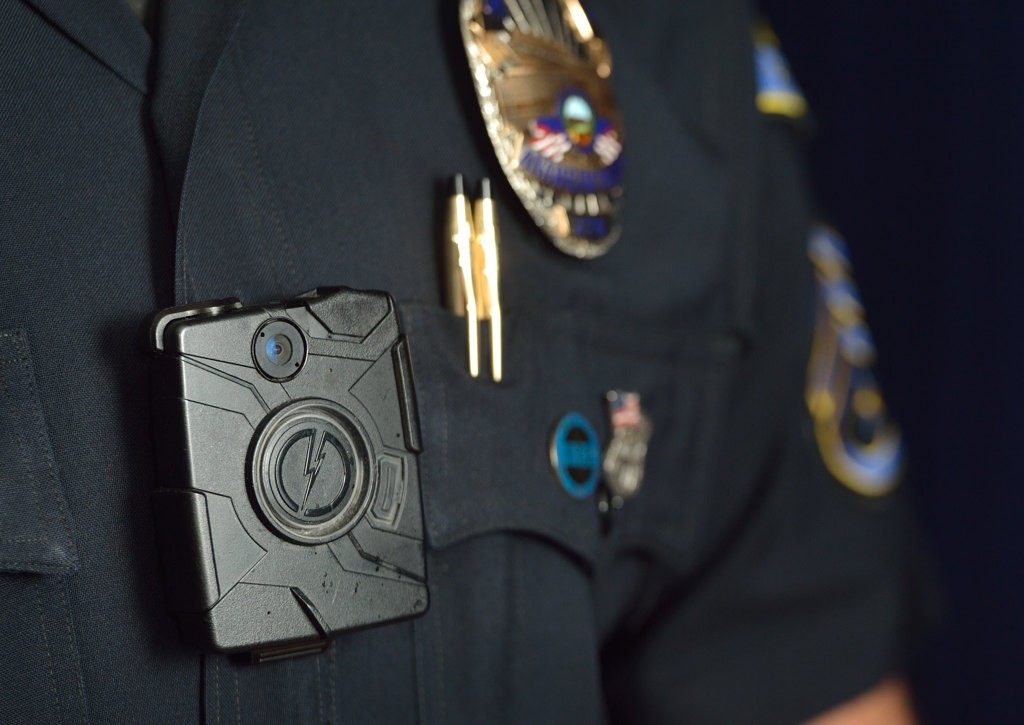
This file photo shows the first generation of APD body cameras rolled out in early 2015. Photo by Steven Georges/Behind the Badge OC
Bonham shared the details of an incident a few months ago in which a woman posted a defamatory allegation about an officer who conducted a car stop on her son earlier in the day.
In the car with the boy was the boy’s adopted sister, who was of a different ethnicity.
The woman’s post painted a picture of a racist motor cop harassing her biracial children.
“Within two hours of the post,” Bonham said, “I was made aware of it, reviewed the video footage, and discovered the allegation was absolutely unfounded. The officer was polite, respectful, never mentioned anything at all about race, and the woman’s son actually thanked him at the conclusion of the car stop.”
Bonham said without that footage, a time-consuming investigation would have likely resulted with the result being inconclusive. A reply by APD was posted regarding the unfounded allegations, explaining that the video was reviewed, and within minutes the woman apologized and removed the post.
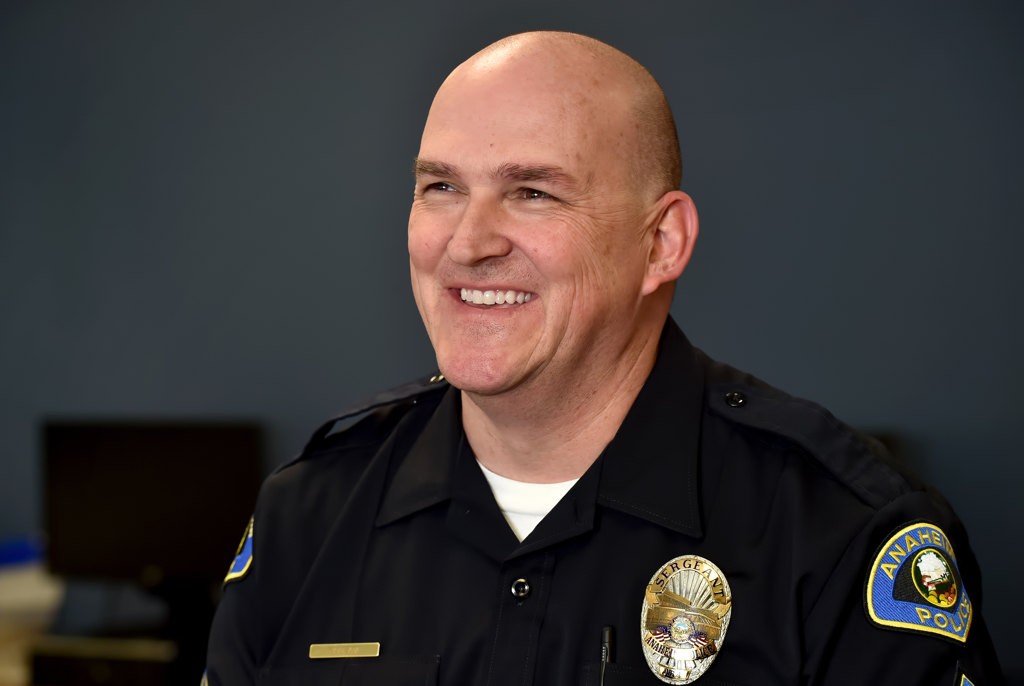
Sgt. Garet Bonham talks about the latest version of body-worn cameras now being worn by Anaheim PD officers.
Photo by Steven Georges/Behind the Badge OC
When APD officers report to duty, they go to the report-writing room to pluck a camera from a docking station that recharges the camera and that also is connected to evidence.com, to which all video footage is encrypted and sent to a highly secure digital evidence locker.
To date, APD body-worn cameras have gobbled up 59 terabytes of storage, said Bonham, 48, one of the APD’s three traffic sergeants who oversees commercial enforcement, collision investigations and Office of Traffic Safety-funded STEP grant.
APD officers activate their body-worn cameras whenever they make contact with a member of the public. They aren’t supposed to sacrifice officer safety when activating them; say, when they are in a foot pursuit.
But the body-worn cameras come with a nifty feature to address that very situation: Whenever the video is activated, the camera captures the previous 30 seconds without audio (what Taser refers to as the “30-second buffer.”
An officer has to hit a button twice to activate a recording, a feature meant to avoid having the cameras mistakenly turned on.
Similarly, when an officer wants to stop recording, he or she has to press down a button and hold it down for a while before it turns off.
Everything recorded on the cameras gets uploaded to evidence.com; there is no delete button.
“When I began working at APD in 1987, the department had just finished installing the first mobile data terminals MDTs in the police cars, and the only mobile phones available were in the trunks of sergeant cars and were about half the size of a shoebox, and the final transition from revolvers to semi-automatic handguns was underway,” Bonham said.
“Since then,” he continued, “we’ve advanced to mobile phones that can operate the current equivalent of the MDT, semi-automatic handguns with holographic optics on them, and body-worn cameras to capture contacts with the public. I’m very interested to see what technological advancements are in store for law enforcement during the next 30 years.”
 Behind the Badge
Behind the Badge
